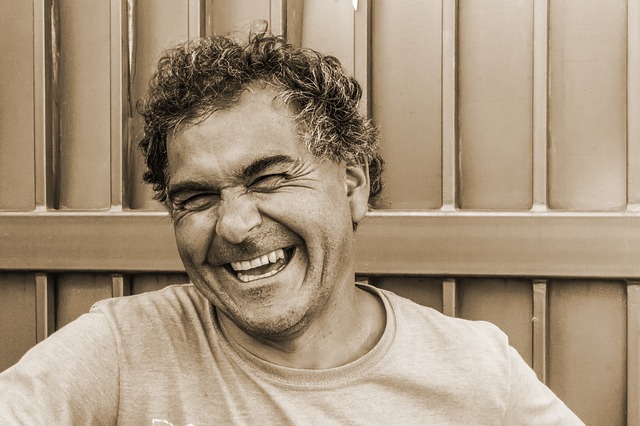Blog
Get Excited about Snacking
Meals are most important but snacking has its place too!
And it’s right in between! Snacking helps regulate blood sugar, which is important for people who need to stay steady throughout the day. When blood sugar drops low, we feel light-headed, hungry and stressed out- this is the classic formula known as “hangriness.” This drives us to crave something quick and satiating- say a chocolate bar. Which then does the opposite, spikes blood sugar levels, causing the body to produce more insulin, uptaking the glucose faster and leaving you low again. Snacks can help us stay balanced.
An equation for healthy snacking
- 150-200 calories
- Blend of carbs, protein and healthy fats
- Nutrient density
- Leave out processed fats and sugars
Some snack-y ideas that fit the formula:
- Apple and peanut butter
- Granola and yogurt
- Lunch meat and low-fat cheese
- Quinoa
- Hard boiled egg and hummus
- Certain nutrition bars
In a very basic scenario, you could split the difference between breakfast, lunch and dinner; i.e.: breakfast at 8, first snack at 10, lunch between 12-1, second snack at 3 and dinner at 6. But every schedule is different and a snacking schedule is rarely rigid. The important thing is to stay in touch with your body- know the warning signs of blood sugar dropping and hasten to eat something healthy before you cave into your sweet tooth’s tastiest desires. When done right, snacking can be fun and keep you sane!
Welcome to the 21st Century with Repetitive Stress Injuries
Repetitive Stress Injuries are a reality for many modern workers
If you are someone who works hours in front of a computer per day, take a second to appreciate all the hours you have spent doing what you do! When you add it up, you see that every day you perform the same task and this is the basis of repetitive injury: starting from the fingers and hands, we can trace a clear path back through the forearms to the shoulders, neck and head and then down the spinal column to the lower back where injuries to muscles and joints often occur.
This map becomes more torturous if we add consistently poor posture into the mix.
It’s no wonder that we treat many people whose bodies are reeling from the effects of a computer-reliant job.
Prevention takes dedication
We can treat your body for the ill-effects of a job that brings on repetitive micro-traumas, but it is up to you to carry out the task of prevention at work. Here are a few simple ways you can stay strong against the incursion of RSI:
- Break regularly. Set a timer and stand up for even 10 seconds every half hour. Once an hour, try to put your body through a quick set of stretches. The apple watch has this feature turned on by default. The apple watch prompts you to stand up after it detects prolonged sitting.
- Do everything you can to control and perfect your ergonomic setup. Use what materials you have; for example, a rolled-up jacket works in place of a lumbar-specific pillow.
- Develop muscles that make holding good posture easier.
- Practice good technique when typing: for example, let your hands float above the keyboard.
At our office, we pledge to you that we will find and address the cause rather than treat the symptom of your pain. We treat RSI with a combination of chiropractic adjustment, massage, and a focus on ergonomics and postural adjustment. Let’s roll back to the years when you could work for hours without the added stress of RSI; call our office to schedule an appointment today!
Breathe to Relax
Deep breathing is one of the most powerful ways you can influence relaxation.
When the stresses of the moment lead you to feel spun out, it is important to take a little time to breathe. In this way, you can harness the power of oxygen to refresh your body and mind and reset your perspective. Diaphragmatic breathing, better known as deep breathing, is the kind when you breathe in through the nose, contracting the diaphragm, and fill your lungs with air. You will know you have taken a deep breath when the abdomen expands rather than the chest.
Combine deep breathing with some simple muscle action to relieve tension throughout the body.
- Close your eyes and begin a pattern of deep breathing, as explained above.
- On the inhale, contract a muscle group and hold for up to 5 seconds.
- On the exhale, release the muscles
- Work your way down from shoulders to toes, one muscle group at a time.
Optimize your breathing with chiropractic
Breathing is a complex system that we tend to unlearn as get older. For example, it is an action that affects and is affected by posture. We want to help you breathe better and this begins with technique! Subluxation in the cervical region can affect the phrenic nerve which powers the diaphragm, thereby affecting breathing. Let’s work together to get your breathing back on track to fight stress and feel better!
How Technology is Changing Our Bodies
Our bodies on technology
The technology age is advancing rapidly, “optimizing our lives,” and our health in the process. However, as the guinea pig generations for many new technologies, it is important to remain wary about the possibilities for harm that they could cause. As chiropractors, we are seeing more people than ever with the so-called, “reader’s neck,” which has now become widespread under the moniker “Forward Head Posture.” Due to our heavy reliance on cell phones, tablets, and computers, our posture is worse than ever and many people are carrying up to 20-30 pounds of extra pressure on their spine at all times.
Here are a few places to use caution when it comes to using (or over-using) technology:
- Our spines: forward head posture, poor spinal curvature and the premature onset of degenerative spinal conditions are all linked to sit-heavy lifestyles, poor posture, and overuse of cell phones.
- Repetitive Stress Injuries: typing, typing, typing we are forever typing out messages, e-mails, and hashtags, before we even get to our office job. This does a lot of damage to fingers, hands, wrists and up to the shoulders.
- Headaches: staring at screens for too long can lead to eye strain, muscle spasms, and tension headaches.
How we help at Greenway Plaza Chiropractic
We are your safeguard for spines against the incursions of technology. With postural analysis, we can determine whether you have forward head posture and if so, begin a routine of stretching and strengthening of the neck muscles that will make it easier to hold your head properly; through chiropractic adjustment, we can effect great improvements on nerve functioning throughout the body which will reduce pain and help the body function optimally. We can identify behaviors that may contribute to repetitive stress and counsel you on ways to negate the damage of overuse injuries. Give our office a call to schedule an appointment today!
Resources for Managing Pain
Regardless of age or physical condition, everyone is prone to a flare of back pain. A person who has never experienced even a twinge of pain or stiffness may wake up one day to find that they slept awkwardly and their neck is now cricked. For people at all points on the spectrum between one-time pain and chronic conditions, it is important to know how to use your resources to allay pain so that it doesn’t sideline you completely.
When it comes to managing back pain in the moment, two of your best resources are ice and heat. And while this may sound like overstated conventional wisdom, it is important to know how to actually apply ice and heat, and why you are doing it. Some people prefer one or the other, but we find that they are especially effective, and actually compliment each other, when alternated in this order:
- Ice to relieve pain and reduce swelling and inflammation. When you apply ice to an injurious region, the blood vessels narrow in a process known as vasoconstriction, your muscles flex and inflammation is immediately reduced. Ice, in the form of a pack, a frozen damp towel, or a bag of frozen peas, should be applied to the injurious region for 10-15 minutes at a time, up to three times a day.
- Heat is used to relax the muscles and stimulate the healing process. The opposite of vasoconstriction, heat catalyzes vasodilation in which the blood vessels open wide, allowing nutrients and oxygen that are necessary for healing to flood the region. Most heat is preferable to dry heat, and you can apply it for up to 20 minutes at a time to achieve pain relief.
When it comes to managing your pain, knowledge is power. We help people find simple and natural ways to encourage a healthier, happier life. If you are suffering from chronic pain, it may be time to make the call and schedule an appointment so we can discern the true cause and begin the healing process.
Staying Happy in the Workplace
Happiness in the workplace takes constant dedication
Even people who are immensely satisfied with their job still need to monitor themselves to prevent the onset of weariness. We need to constantly listen to our bodies and brains: take stock of your stress levels, feel the twinges of pain and respond to them in a healthy manner rather than burying them away until they surface calamitously in the future. Essentially you need to separate “working you” from “you you.”
Ways to stay happy in the workplace
By exerting control over the factors that are within your power, you can set the balance equally against those factors you cannot control and thereby prevent a lot of unnecessary stress. Here is a brainstorm of ways to improve your experience in the office:
- The comfort of your workspace: temperature is important. Too hot and your brain boils; too cool and your office feels like a cave so 65-70 Fahrenheit is a good target. Your ergonomic setup is also important for preventing pain and contributing to good posture.
- Noise: keep the sound down as much as possible to contribute to a more zen atmosphere in the office.
- Engage with coworkers: face-to-face, not over e-mail!
- Keep moving: stand up and go for no-screens at least once every hour
How we help
While there has been a recent change in the attitude of companies toward employee health, many offices still sell their employees short in terms of ergonomics and stress management. At our office, we are your resource if you are feeling burned out from office life. We can help your body combat physical stress by addressing subluxation and muscle tension, which will allow you to focus on feeling your best mentally. Give our office a call to schedule an appointment today.
Empower Yourself from your Office Chair
You are losing flexibility while you sit hunched over.
8 hours in an office chair is a brutal reality for your back. Multiply that by the average amount of days you work in a year and you can see how the hours add up against your spine. Unless we are proactive, we are literally letting our flexibility fall by the wayside to the chagrin of our bodies. We need flexibility to perform basic human movements without pain: the lifts, twists, turns, and reaches that make up the subconscious movements of the day. Even standing up and walking depends on our bodies having a baseline of flexibility.
Stretching from your desk can revolutionize the way you feel at work.
Try this from your office chair:
- Gentle twist: Sit up straight. Gently twist to the right and look over your right shoulder. Hold for 5-10 seconds and repeat on the other side.
- Fold from the chair: come to the edge your chair and extend your legs forward with feet hip-distance apart. Exhale and fold your upper body forward reaching with your hands for your feet. Grasp as far down your leg as you can and hang for 15 seconds.
- Upper shoulder stretch: Reach right hand over right shoulder and reach your left hand behind your back. Clasp your hands together and create a tension that stretches the shoulders and chest. Hold 15 seconds.
Stop feeling stiff at work
This stretch routine takes about 2 minutes and it can release a lot of tension from the body. If you could do it once every hour you would be doing your body a grand favor. Let’s work together to identify the ways in which you are letting your body down. From poor body mechanics and movement to poor posture, everyone has room for improvement. By being proactive about your flexibility, you can ensure an old age with less pain and more independence. Let’s start moving more and moving more purposefully today! Give our office a call to schedule an appointment.
10,000 Steps: Is Walking your way to Fitness Realistic?
What’s the big deal behind 10,000 steps?
It is a nice round number that can be easily tracked by fitness devices, and the number seems to have stuck. Science is currently debating the specifics of 10,000 steps down to the detail of the individual’s leg length, and overall fitness of the individual. Of course, fitness is more nuanced than a simple round number like 10,000 but there is still merit to the idea.
The math behind 10,000 steps:
10,000 steps can be achieved in roughly 30 minutes of walking. This is a lot easier on the ears than 150 minutes of exercise per week, which 30 minutes of walking a day actually exceeds. This is enough to qualify you as a “moderately active person.”
The idea of 10,000 steps is right
Perhaps you already hit the gym three times a week; in this case, walking 10,000 steps a day is unlikely to increase your level of fitness. For someone who never exercises, 10,000 steps can be a boon. Even if the verdict is still out on just how healthy 10,000 steps can be, the idea is in the right place: it is easy to understand and sets a baseline to strive for. This falls in with the idea of setting a daily fitness goal for yourself. So let’s take this idea and adapt it to your life.
The question remains: how can you be more healthy?
Setting realistic goals is the best way, so rather than following arbitrary guidelines such as 10,000 steps, think at a more individual level- what ways can I improve? Here are some ideas to get you started:
- Walk 30 minutes a day
- Eat 1-2 pieces of fruit per day
- Stretch for 30 minutes
- Run, swim, or bike (whichever makes you happiest) for 30 minutes twice a week.
Start by keeping your goals broken into realistic chunks of time such as 10 minutes or half an hour and powerful changes in both attitude and fitness will result. We want to help you heal your body so that you can focus on activities that make you happy and keep you fit. If you have long-standing pain or dysfunction that is holding you back, give our office a call to schedule an appointment today. We will work with you to detect the true cause of your pain and create a multi-faceted plan for removing you from the clutches of pain today.
A How-To For Sleeping With A Spinal Injury
Sleep is essential for pain management
For people suffering from spinal conditions, sleep often offers the only reprieve in a day full of pain and discomfort. Being able to extend your spine on a comfortable mattress may offer pain relief for some, but for others, sleep is less easy to come by. When it comes time to quiet your mind and get to sleep, there is nothing to distract you from your back pain. Insomnia becomes both a cause and an effect of your back pain, and this cycle can be hard to break out of. The best way to get to sleep despite your pain is by finding comfort. We have dedicated our lives to helping people with chronic back pain increase the amount of comfort in their lives so that they can find the sleep they need to push on.
Most comfortable sleeping position by spinal-condition
- Herniated discs: people with this condition find the most relief sleeping on their sides and stomach, as long as the stomach is supported by a pillow underneath. A medium-density mattress allows for your shoulders and hips to sink in comfortably while still supporting the curvature and neutral alignment of your spine.
- Degenerative disc disease: reducing stress on the discs is achieved by opening up space between the vertebrae. When sleeping, most people find comfort on their stomach, with a supporting pillow underneath.
- Osteoarthritis: we most often recommend a loose fetal position, in which the knees are raised but the spine remains straight through the neck. This position relieves pressure on spinal joints.
At our office our job is to use hands-on modalities to restore alignment to your spine and reduce the severity of your symptoms. In so doing, we aim to reduce pain and improve function, helping you find the comfort you need to sleep.
Eating Clean to Defeat Chronic Inflammation
Chronic inflammation is the natural result of a poor diet
Foods that are high in processed ingredients usually contain high levels of sugar and bad fat- foods that make you feel OK and fill you up but let you down in the long run. A buzzword in the health community, inflammation is linked to all sorts of problems in the human body- pain, arthritis, obesity, and beyond, but here’s one that may not have occurred to you before:
Chronic inflammation is linked to cortisol imbalance
The brain’s foremost stress hormone, cortisol, is produced by the adrenal gland, and keeping it in balance is critical for maintaining the health of every cell in the body. By raising inflammation, a poor diet is helping to throw your cortisol rhythm out of balance and thereby, results in the following symptoms:
- Anxiety and depression
- Problems falling and staying asleep
- Weight fluctuation
- Decreased memory
- Immune system dysfunction
A plan for eating clean to fight inflammation and cortisol imbalance
Diet, along with sleep, is one of the most powerful ways you can control cortisol rhythm and the functioning of your adrenal glands.
- We start by ditching the processed foods. As much as possible, try to limit your intake of drive-thru or ready-made meals.
- This goes along with controlling the quality of fats and sugars you intake.
- Focus on anti-inflammatory foods or supplements that contain omega-3 fatty acids, spices such as turmeric, cloves, and ginger,
- Avoid caffeine and alcohol late at night: Both are great at disturbing your natural flow and interfering with the quality of sleep.
This is not a radical change in your diet, but it does ask that you take some care in avoiding the pitfalls of ready-made meals and exercising more care over the ingredients you consume. We can help you identify behavior that is causing inflammation and cortisol levels to remain high and quality of life low. Give our office a call to schedule an appointment today.









